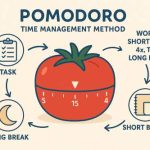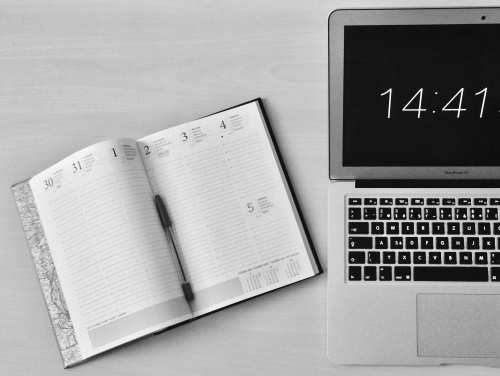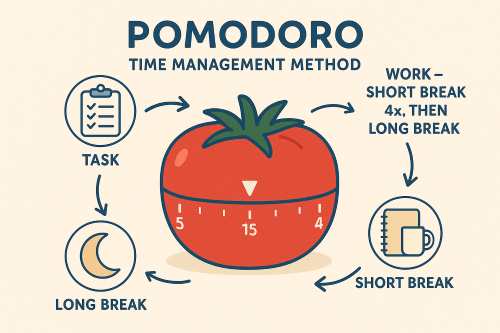As you probably know, there is one time management method used by practically everyone in the world (tell me I am wrong) – namely the traditional time blocking. OK, I know maybe I am exaggerating, but based on my personal experience I have sworn by this method my whole life. Why not? This is the only time management system I have been using since my school era (geez, I don’t know, back in the 90s).
But times have changed, new approaches have been invented that are more robust and effective, and if you don’t accept this new method you miss many benefits it offers. Embrace the new method: goal-driven planning. What is that and what does it offer? Let’s dive into it.
Understanding Traditional Time Blocking
OK folks, before we dive into this new shiny method, let me take you through a brief concept of traditional time blocking – and I believe this method already runs in your veins right now.
Imagine it’s your ordinary Monday morning, 9 AM at your office. You already have a plan to create a project schedule for the new contract from 9 AM to 10 AM. From 10 AM to 11 AM your plan is a quick review of the new software prototype’s features.
Then you start working at 9 AM, focusing on creating the project schedule. The clock is ticking and it’s 10 AM. Even though you haven’t finished the first task, it’s time to switch to the task you planned earlier: quickly reviewing the new software prototype.
So the point is, in time blocking you fill each time block with a specific activity based on your plan.
Introducing Goal-Driven Planning
How about goal-driven planning? Here’s the illustration.
When you plan your day, the first thing is to set the goal – what do you wish to achieve? In this example, let’s use the previous scenario: the first goal is creating a project schedule for the new contract, and the second is quickly reviewing the new software prototype’s features.
So on Monday at 9 AM you start working on the first goal. After 1 hour of full focus you take a break – maybe a sip of coffee or tea, a quick trip to the bathroom, whatever. At 10 AM you don’t switch to another task; instead you continue the current task until it’s finished.
I’m pretty sure by now you’re starting to see the difference between these two methods. You focus on the goal itself, no matter how much time you spend on it. See?
Time Blocking vs Goal-Driven Planning: Head-to-Head Comparison
Now how about a head-to-head comparison of both?
Time Blocking Benefits:
- Always ensures time allocation for all tasks
- Prevents procrastination effectively
- Creates structure for your daily schedule
- Works well for routine tasks and meetings
Goal-Driven Planning Benefits:
- Offers deep focus and avoids task-switching
- Perfect when you’re in the zone and don’t want to lose momentum
- Aligns with your priorities since the goal is the main focus
- Best for high-impact projects like writing, coding, or studying
Based on these characteristics, for routine tasks such as meetings or days with many small tasks, the time blocking method works well. Goal-driven planning is best for high-impact projects like writing, coding, or studying.
Combining Both Time Management Techniques: The Best of Both Worlds
So both methods come with their own pros and cons – which one should you choose? Here’s the exciting part: you can combine both in your daily tasks.
Imagine this: on Monday morning from 9 AM to 12 PM you apply goal-driven planning while your energy is at its peak, and apply the time blocking method after lunch, when your energy dips, for routine tasks that don’t require sharp focus. Sounds good?
This hybrid approach to productivity management allows you to:
- Maximize your peak energy hours with deep work
- Handle routine tasks efficiently during low-energy periods
- Maintain both flexibility and structure in your schedule
Which Time Management Method Should You Choose?
Which method is best depends on your individual needs and habits. Incorporating both would be ideal for most people. You might want to try each method to see which one fits your daily tasks.
The goal is clear: boosting your productivity while maintaining your balance.
Frequently Asked Questions About Time Management Methods
What is the main difference between time blocking and goal-driven planning?
Time blocking assigns specific time slots to tasks regardless of completion, while goal-driven planning focuses on completing goals without strict time constraints.
Which time management technique is better for beginners?
Time blocking is often better for beginners as it provides more structure and helps prevent procrastination. It’s easier to follow a predetermined schedule when you’re still developing productivity habits.
Can I use both time blocking and goal-driven planning together?
Absolutely! The hybrid approach works best for most people. Use goal-driven planning during your peak energy hours for important projects, and time blocking for routine tasks and administrative work.
What types of work benefit most from goal-driven planning?
Creative work, deep thinking tasks, coding, writing, research, and any project requiring sustained concentration benefit most from goal-driven planning.
How do I know which productivity method suits me best?
Try each method for at least one week. Track your productivity, stress levels, and task completion rates. The method that helps you accomplish more while feeling less stressed is your best fit.
What are the biggest mistakes people make with time blocking?
The most common mistakes include being too rigid with time slots, not accounting for interruptions, and switching tasks even when you’re making good progress on the current one.
Is goal-driven planning suitable for people with ADHD?
Goal-driven planning can work well for people with ADHD as it allows for hyperfocus periods. However, combining it with some time blocking elements for routine tasks often provides the best balance.
Ready to boost your productivity? Start by trying the time management method that resonates most with your work style. Remember, the best productivity system is the one you’ll actually use consistently.
Related Topics: Daily Planning Strategies | Productivity Tools | Work-Life Balance Tips
Photo by Michaela: https://www.pexels.com/photo/flat-lay-photography-of-unfold-book-beside-macbook-295826/







